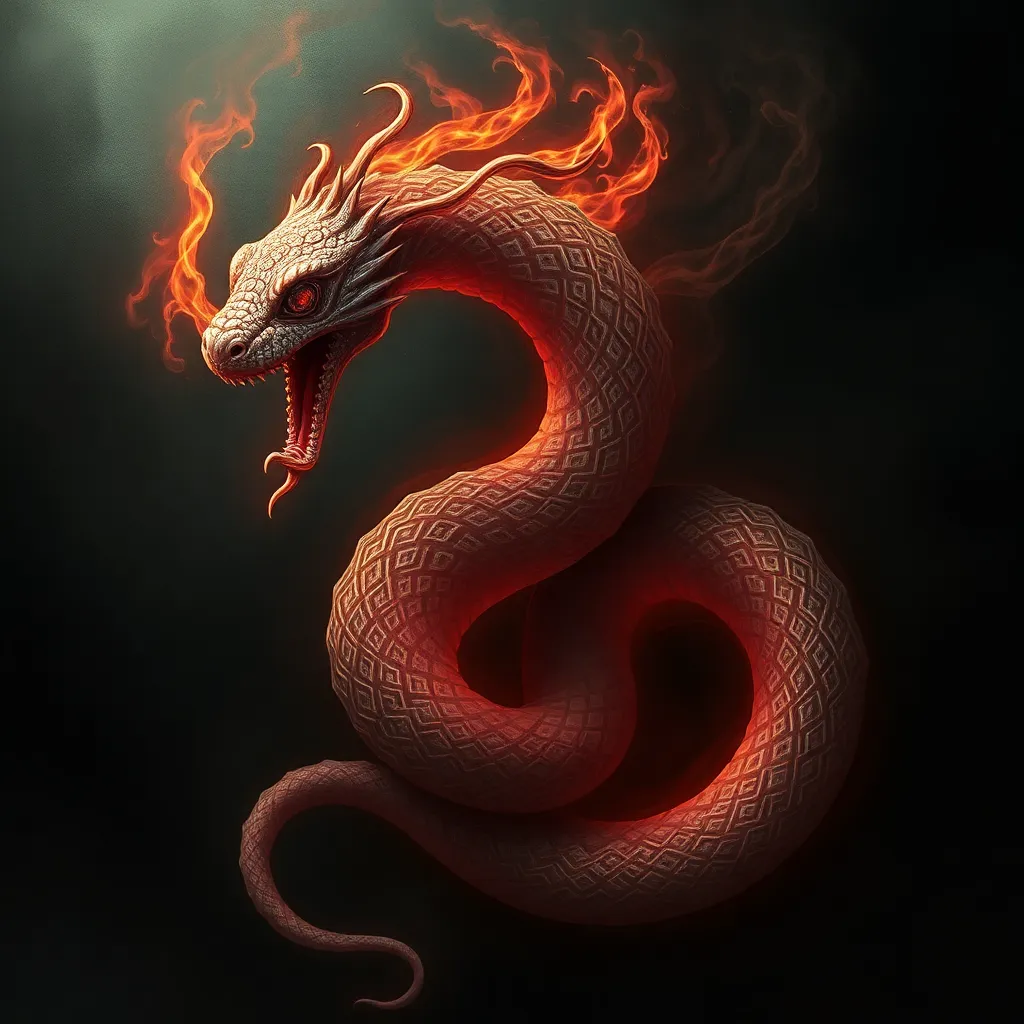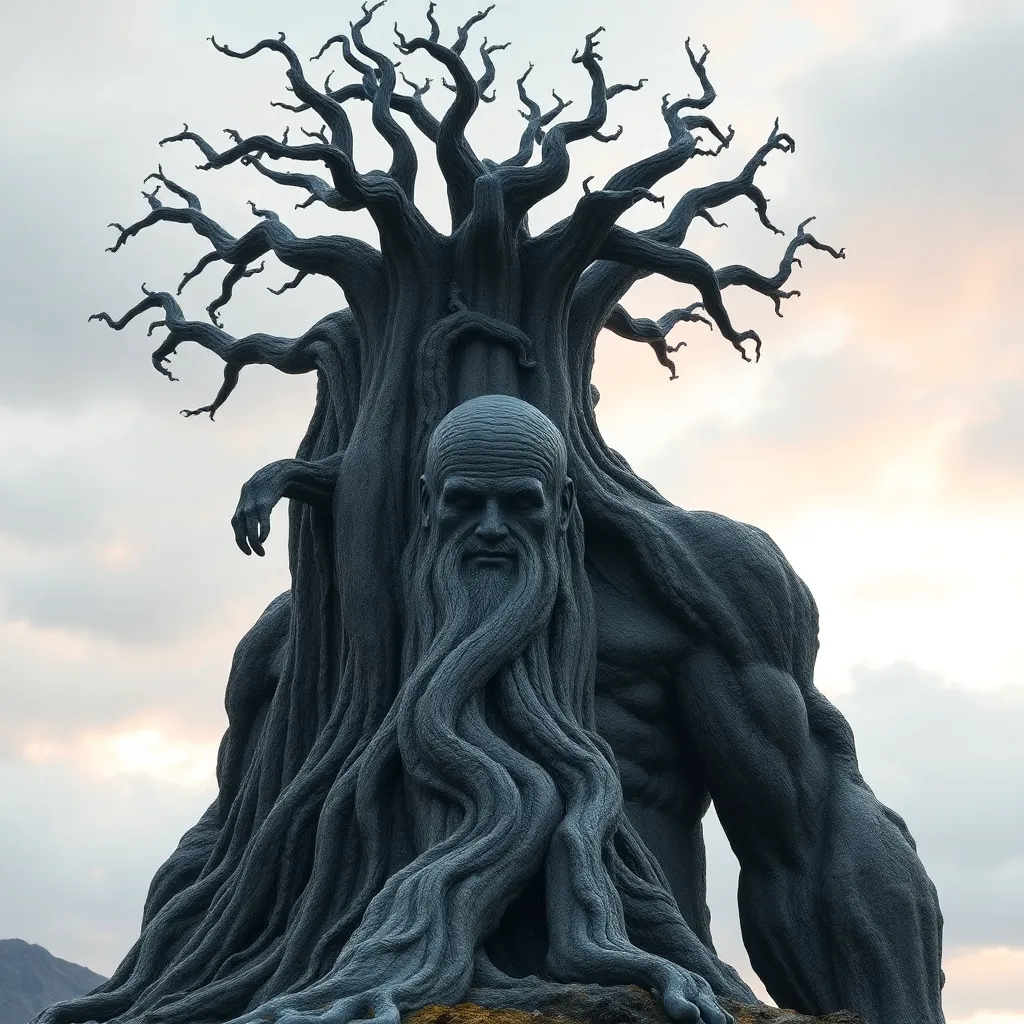Echidna in Celtic Mythology: Exploring the Serpent-Woman’s Echoes in Celtic Folklore
I. Introduction
The figure of Echidna in mythology serves as a compelling symbol, intertwining themes of femininity, monstrosity, and the natural world. Originating from Greek mythology, Echidna is often referred to as the Mother of Monsters, a title that encapsulates her significant role in the pantheon of mythological creatures. Celtic mythology, with its rich tapestry of stories and characters, offers a unique lens through which to explore similar themes. This article aims to uncover the connections between Echidna and Celtic folklore, revealing the echoes of her myth across different cultures.
II. The Mythical Origins of Echidna
Echidna finds her roots in Greek mythology, where she is described as a half-woman, half-serpent creature. She is the consort of Typhon, another monstrous figure, and together they spawn many of the legendary beasts that populate Greek myths. Often portrayed as a fearsome figure, Echidna embodies the chaotic nature of the world, reflecting humanity’s fears and fascination with the unknown.
- Mother of Monsters: Echidna is credited with giving birth to several iconic monsters, including Cerberus, the Hydra, and the Chimera, each representing different aspects of human anxiety and the natural world.
- Comparative Mythology: Similar figures of serpent-women appear in various cultures, such as the Mesopotamian goddess Tiamat and the Hindu goddess Kali, highlighting a universal archetype that transcends cultural boundaries.
III. The Symbolism of Serpent-Women in Mythology
Serpent-women in mythology often symbolize duality and complexity. They can embody the nurturing aspects of femininity while simultaneously representing danger and chaos. This duality can be explored through several themes:
- Archetypal Significance: Serpent-women often serve as guardians of sacred knowledge or treasures, reflecting the belief that wisdom can be both enlightening and perilous.
- Themes of Femininity: The intertwining of femininity and monstrosity challenges traditional views of women, presenting them as powerful figures capable of both creation and destruction.
- Dual Nature of the Serpent: The serpent, as a symbol, embodies both life (as in renewal and fertility) and death (as in danger and destruction), representing the cycles of nature.
IV. Celtic Folklore: An Overview
Celtic mythology is rich in themes that often parallel those found in the myth of Echidna. Central to Celtic folklore are the intricate relationships between humans and the supernatural, as well as the powerful roles that women play in these narratives.
- Key Themes: Themes of heroism, transformation, and the battle between light and dark are prevalent, often involving supernatural beings and their interactions with humans.
- Nature and the Supernatural: Nature is deeply interwoven with the supernatural in Celtic tales, where forests, rivers, and mountains are often inhabited by spirits and deities.
- Role of Women: Women in Celtic mythology frequently hold positions of power, from goddesses to warriors, reflecting a complex view of femininity.
V. Parallels Between Echidna and Celtic Serpent-Women
In Celtic mythology, several figures can be identified as serpent-women or as embodying similar traits to Echidna. These figures reveal interesting parallels and shared themes.
- Celtic Serpent-Women: Figures such as the goddess Danu and the Morrigan can be viewed through the lens of serpent-women, as they both encompass aspects of fertility, power, and the supernatural.
- Comparative Analysis: While Echidna is often seen as a monstrous figure, Celtic counterparts can embody nurturing qualities, suggesting a nuanced view of femininity that includes both creation and destruction.
- Shared Themes: Both Echidna and Celtic serpent-women share themes of motherhood and monstrosity, symbolizing the complexities of female power.
VI. The Influence of Echidna on Celtic Narratives
The influence of Echidna can be observed in various Celtic tales, where her essence may resonate through stories of powerful women and monstrous beings.
- Cultural Exchange: The interactions between Greek and Celtic cultures, particularly through trade and conquest, may have led to the adaptation of Echidna-like figures in Celtic narratives.
- Examples of Echoes: Tales such as the story of the serpent goddess in the Welsh myths or the stories of the Morrigan often reflect themes of chaos and power reminiscent of Echidna.
- Analysis: These narratives illustrate how the figure of Echidna has permeated Celtic culture, adapting her characteristics to fit within a different mythological framework.
VII. Modern Interpretations and Representations
In contemporary literature and art, the figure of Echidna and the broader archetype of the serpent-woman have seen a resurgence. This modern interest reflects a growing fascination with complex female figures in mythology.
- Presence in Literature: Modern novels and poems often draw on the imagery of serpent-women, reinterpreting their roles as symbols of empowerment and resilience.
- Cultural Resurgence: The serpent-woman archetype has become increasingly relevant in discussions of gender and power, resonating with contemporary feminist movements.
- Celtic Influence: Celtic folklore continues to inspire new narratives, with writers and artists exploring the intersections of myth and modernity.
VIII. Conclusion
Through this exploration of Echidna and her echoes in Celtic mythology, we can see the enduring legacy of serpent-women as powerful symbols of femininity, chaos, and the natural world. The connections between these mythologies highlight the universality of certain themes, such as motherhood and monstrosity. As we continue to delve into the rich narratives of different cultures, we uncover the intricate web of stories that bind us and the timeless figures that inspire us to explore the nature of power, femininity, and the human experience.



